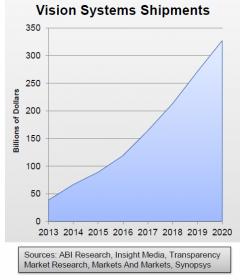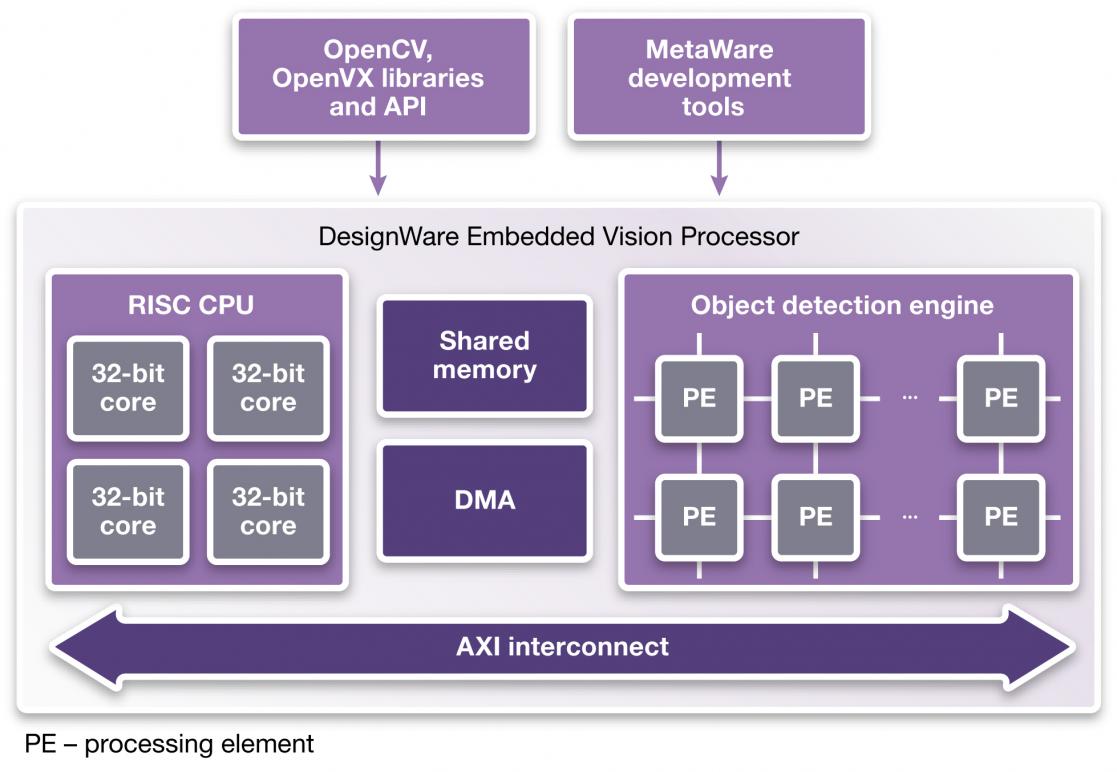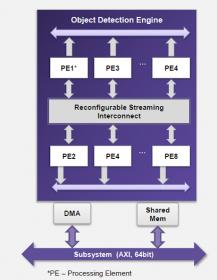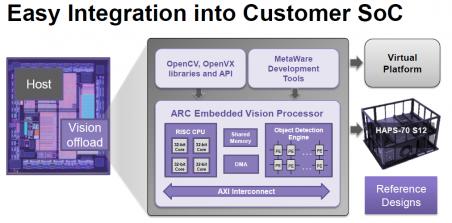Before answering the question we should try to define what is behind “Vision”, which type of applications and evaluate this heterogeneous market weight. Embedded Vision (EV) is the use of computer vision in embedded systems to interpret meaning from image or video. In fact vision processing requires a lot of maths functions that General Purpose Processor (GPP) doesn’t support. Gaming is probably the oldest vision application, at least as old as the PC. Graphic Processor Unit (GPU) has been initially developed to support gaming and GPU is dedicated to vision, no doubt about it. But traditional GPU are burning a lot of power and require a large amount of (external) memory, again burning extra power. Even if GPU is well tailored for game console or PC gaming, GPU cost and power dissipation is prohibitive for the many innovative applications like surveillance, home automation, and gesture recognition or object detection. Just add automotive related applications to support driver comfort or security and you realize why embedded vision systems is an exploding market expected to weight up to $300 billion in 2020 – exhibiting 35% CAGR!

Synopsys has developed a multicore architecture optimized for vision processing, “DesignWare Embedded Vision Processor”, based on a x2 (EV52) or x4 32-bit RISC CPU (EV54) plus an object detection engine implementing convolutional neural network (CNN). OpenCV (and OpenVX libraries) is a very popular software programming environment used to develop vision related systems, speeding application SW development. Synopsys EV offer performance as high as 1000 GOPS per Watt and the IP vendor claims 5x better power efficiency than existing vision solutions from competition.

On-chip memory, from 512 KB to 4 MB, can be shared between the object detection engine and the RISC CPU cores. The number of Processing Element (PE on the right side) is programmable to run Convolutional Neural Network (CNN). The designer can run the PE at up to 500 MHz (on 28nm) when the CPU can go up to 1 GHz, still on 28 nm. If we take as an example of face detection function with 720p resolution implemented on a 28HPM technology running at 500 MHz (@ 30 fps), the power consumption is kept low at 175 mW and the footprint including processor and memories very small at 2.6 mm[SUP]2[/SUP].

If we zoom into the object detection engine, the PE count is configurable from 2 to 8, as well as the Streaming Interconnect, in fact a sophisticated crossbar, dedicated to this function and able to be dynamically changed. As we can see the Synopsys EV IP is far much than a CPU core as it includes two (four) RISC CPU, two to height configurable PE connected together via a reconfigurable streaming interconnect, plus a DMA and shared memories (from 512 KB to 4 MB). In fact this EV solution is a complete subsystem, optimized for embedded vision. This subsystem has been designed for use with a host processor:
- Portion of the EV processor memory space is visible to host
- Host and DesignWare EV synchronization is guaranteed through message passing.
For early software development the designer may use available virtual platform models and HAPS FPGA based platform support hardware prototyping. Last point: DesignWare EV is host agnostic and the subsystem interface is industry standard AXI 64-bit.

Availability and Resources
EV52 (2 cores version) and EV54 prototypes will be available by May 1[SUP]st[/SUP] 2015.
You may download EV52 and EV54 datasheet.
From Eric Esteve from IPNEST
Share this post via:






Comments
There are no comments yet.
You must register or log in to view/post comments.